25 Things to Know From 25 Years of GMOs

Significant progress has been made in technology over the past quarter century, from cell phones and broadband to satellites and GPS systems. In the last 25 years, GMO crops are one tool that has helped consumers, farmers and rural communities. To mark the 25th anniversary of GMOs becoming available, we’ve developed a list of 25 things to know about GMOs, from current GMOs to GMOs in development that could solve problems like malnutrition and blindness. We’ve also thrown in a few mythbusters to the mix, since we know there’s a lot of misconceptions about GMOs.
What You Should Know About Current GMO Crops
Corn
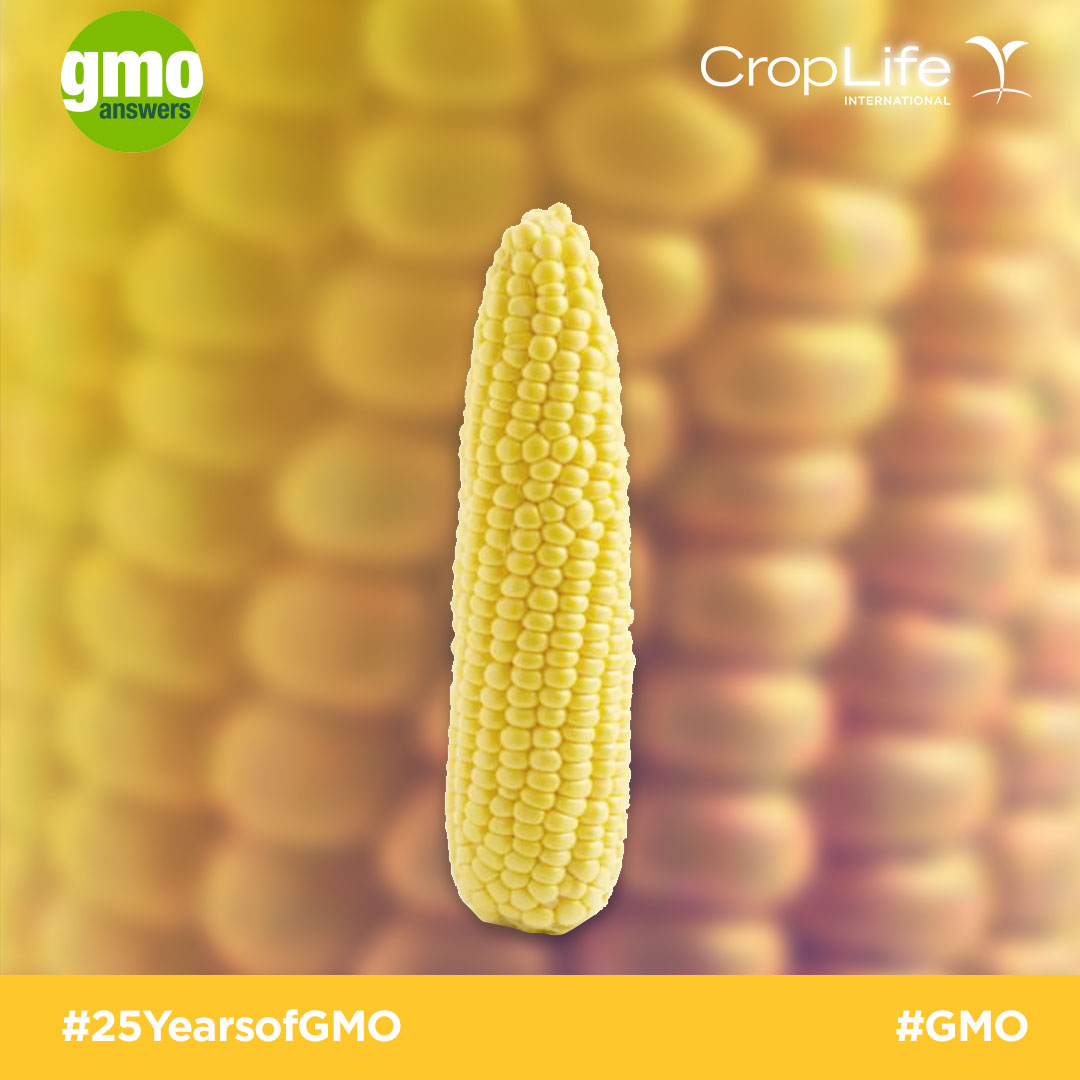
In 1996, corn became one of the first GMOs to reach the market. GMO corn has a wide range of desirable traits, including drought resistance and insect and pest resistance, with an added benefit of higher yields. Today, GMO corn has been approved to grow in 38 countries around the world and is a major global commodity. Much of the GMO corn grown is field corn, which is used for things like animal feed, fuel for our cars, oil for sunscreen and water bottles, starch for magazine printing, and sidewalk chalk.
Soy
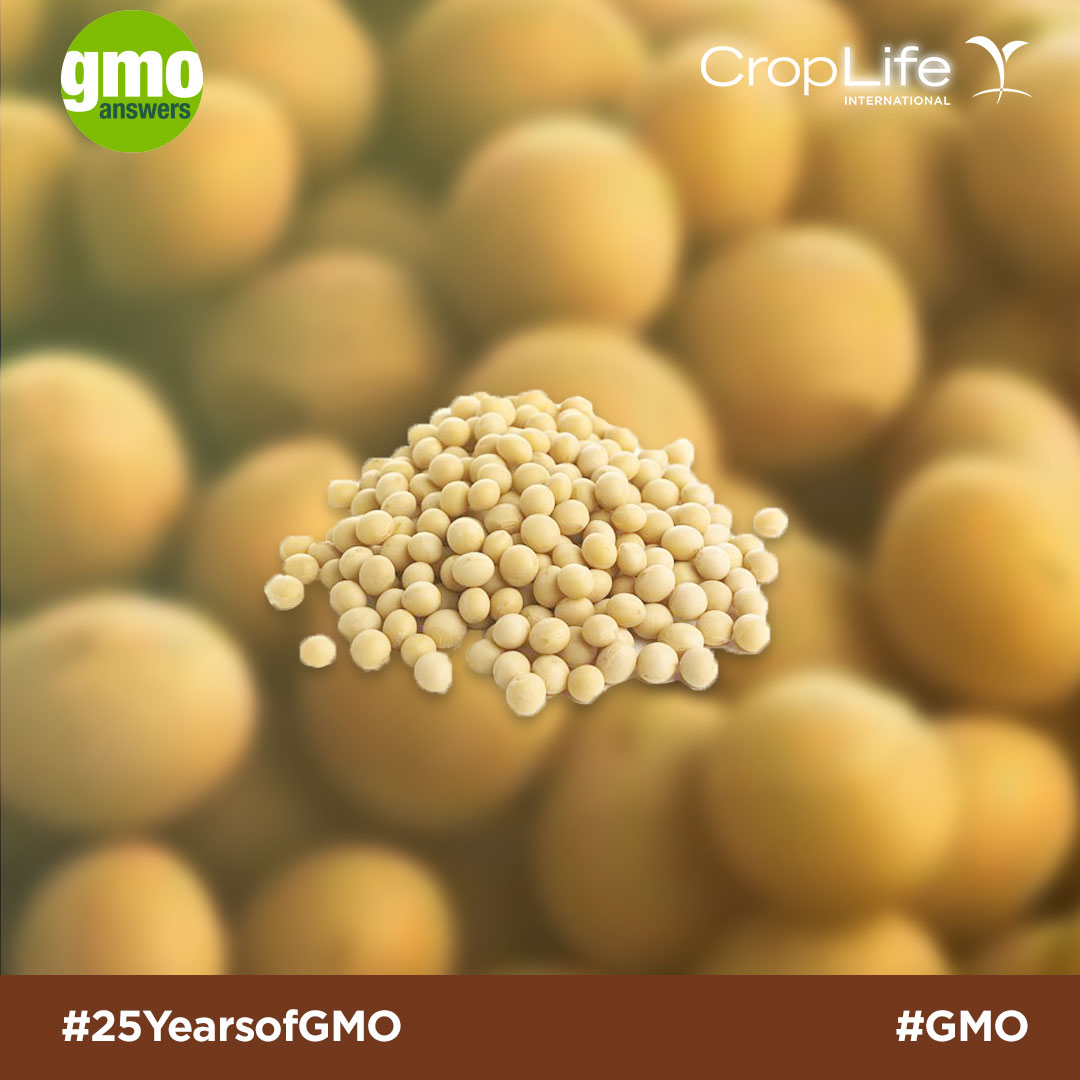
GMO soybeans have been on the market for 25 years and are now the most widely grown genetically modified crop in the world. GMO soybeans are a useful crop for the farmer and the consumer. From the consumer side, soybean or soy byproducts are used in foods, animal feed, and the production of crayons, lubricants, and even biodiesel. GMO soybeans are in such high demand because soy products tend to be a safer alternative to other synthetic products. After all, it is plant-based and a sustainable and renewable resource.
Sugar Beet
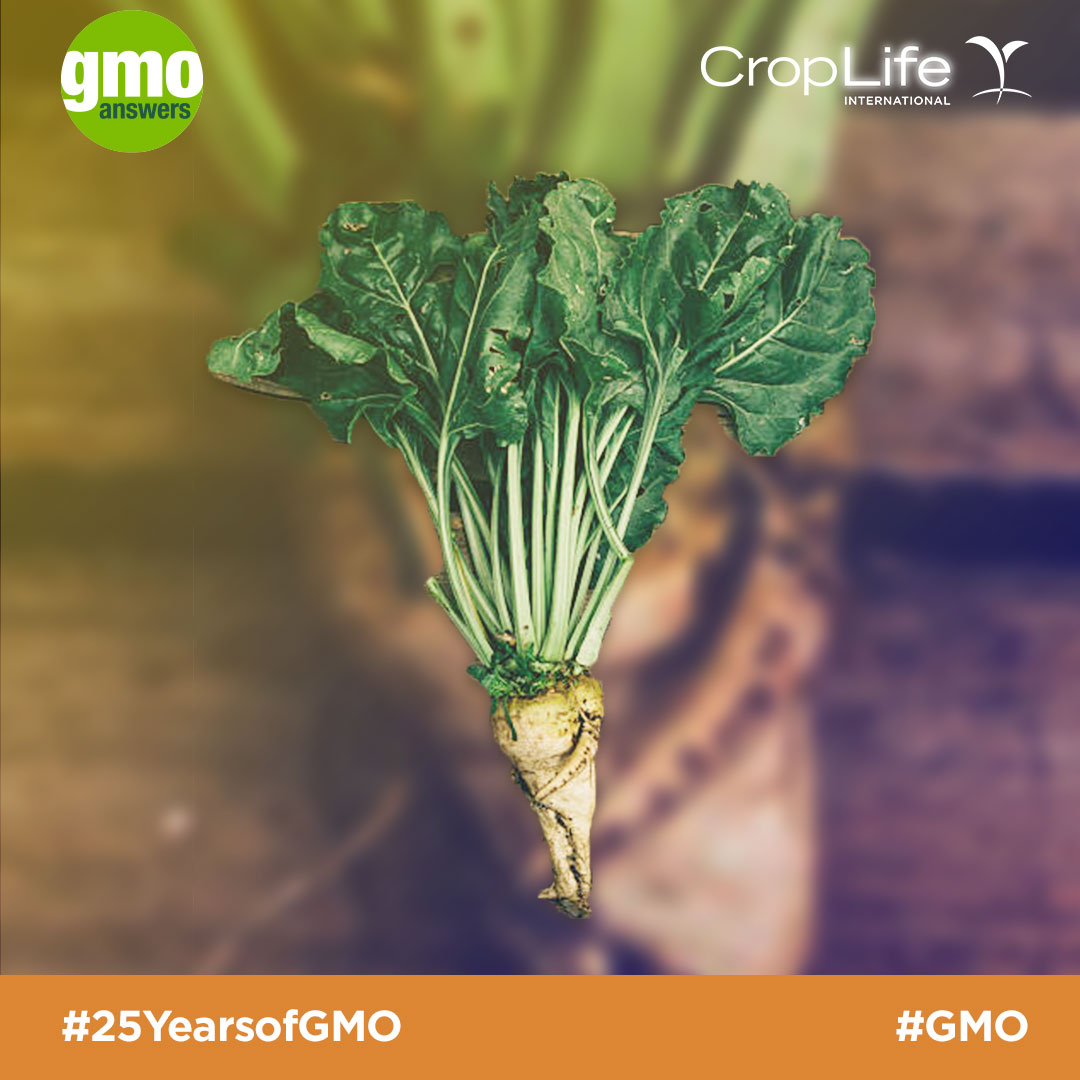
Genetically modified sugar beets were first commercialized in 2007 and are now grown on over 1 million acres between the US and Canada. Almost half of all sugar sold in the United States comes from sugar beets. GMO sugar is also identical to non-GMO sugar. GMO sugar beets allow farmers and consumers to save money and be better stewards of the environment. GMO sugar beets are so successful that they make up 95% of all sugar beets grown, anywhere!
Canola
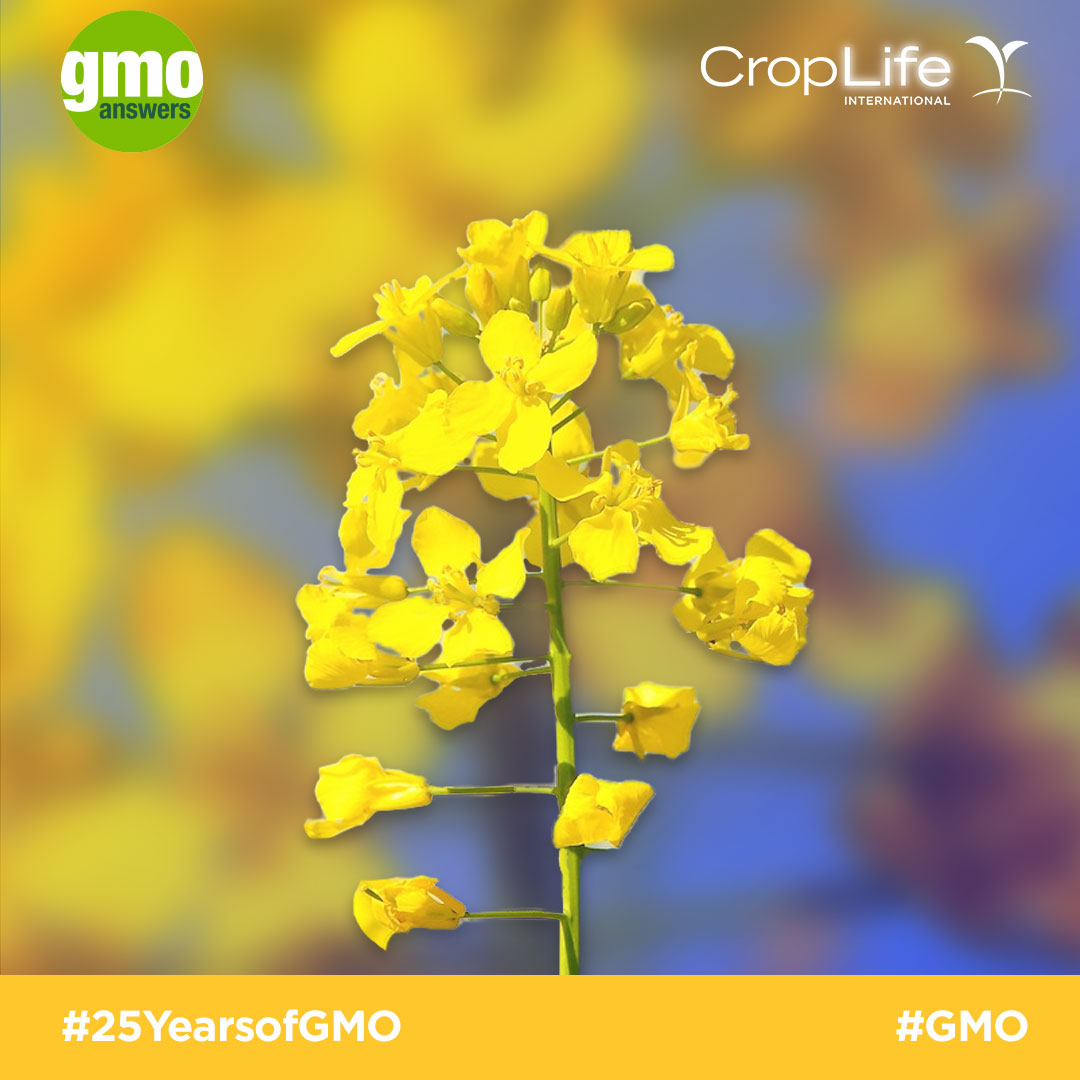
Canola is a type of rapeseed that was created by plant breeding in Canada in the 1970s, while GMO canola came on the market in Canada in 1995. The canola plant produces distinctive yellow flowers that produce a pod with canola seeds. These seeds are used to make the popular canola cooking oil that many people have in their kitchen. GMO canola is herbicide-tolerant, which enables a farmer to use an herbicide to control weeds that might compete with the canola for water and nutrients - without damaging the crop. Canola farmers can practice no-till or conservation tillage, which reduces soil erosion, improves soil quality, reduces greenhouse gas emissions, and cuts water use.
Cotton
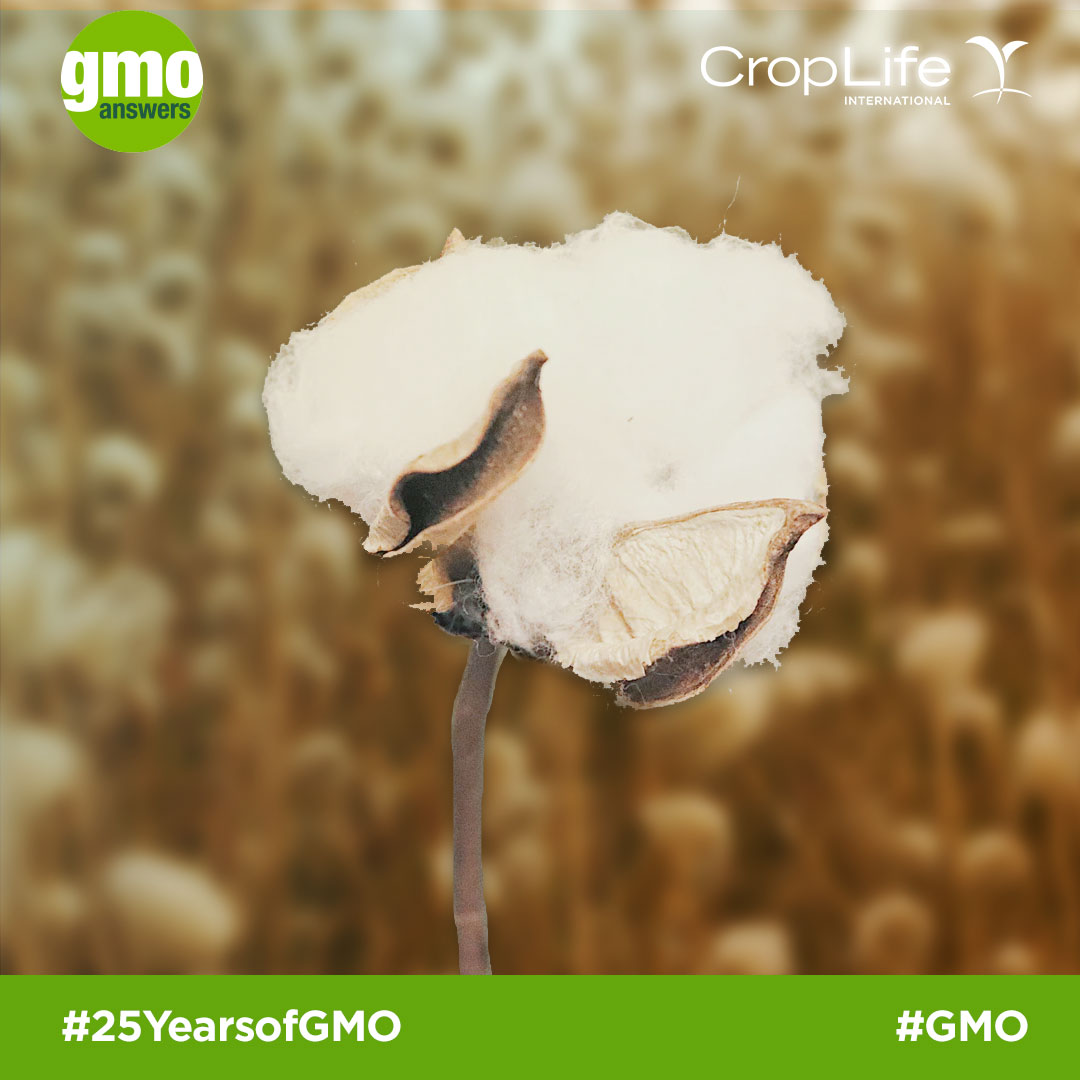
GMO cotton is grown in 15 countries around the world - on every continent except Europe. GMO cotton yield is twice what it was 50 years ago due to traits of insect-resistance, meaning farmers are no longer losing their crops to pests like insects and worms. GMO cotton also allows cotton to be more environmentally friendly; in the last 20 years, production energy, farming emissions, soil loss, and water use have all gone down at least 30% per pound of cotton produced. About 88% of all cotton grown in the U.S is GMO, making it a huge success story for farmers, consumers, and the environment.
Alfalfa

Alfalfa is a highly nutritious perennial legume and is the fourth largest US crop in terms of acreage and production value, behind only corn, soybeans, and wheat. Today, over 20 million acres of alfalfa are harvested each year in the US alone. Most alfalfa grown is not for direct human consumption, but rather is used as feed for dairy cattle. GMO alfalfa has been incredibly successful at reducing insect and pest presence and harmful weed infestations, thereby increasing overall yield. Most recently, alfalfa has been modified with a trait to allow for better digestion in cattle.
Squash
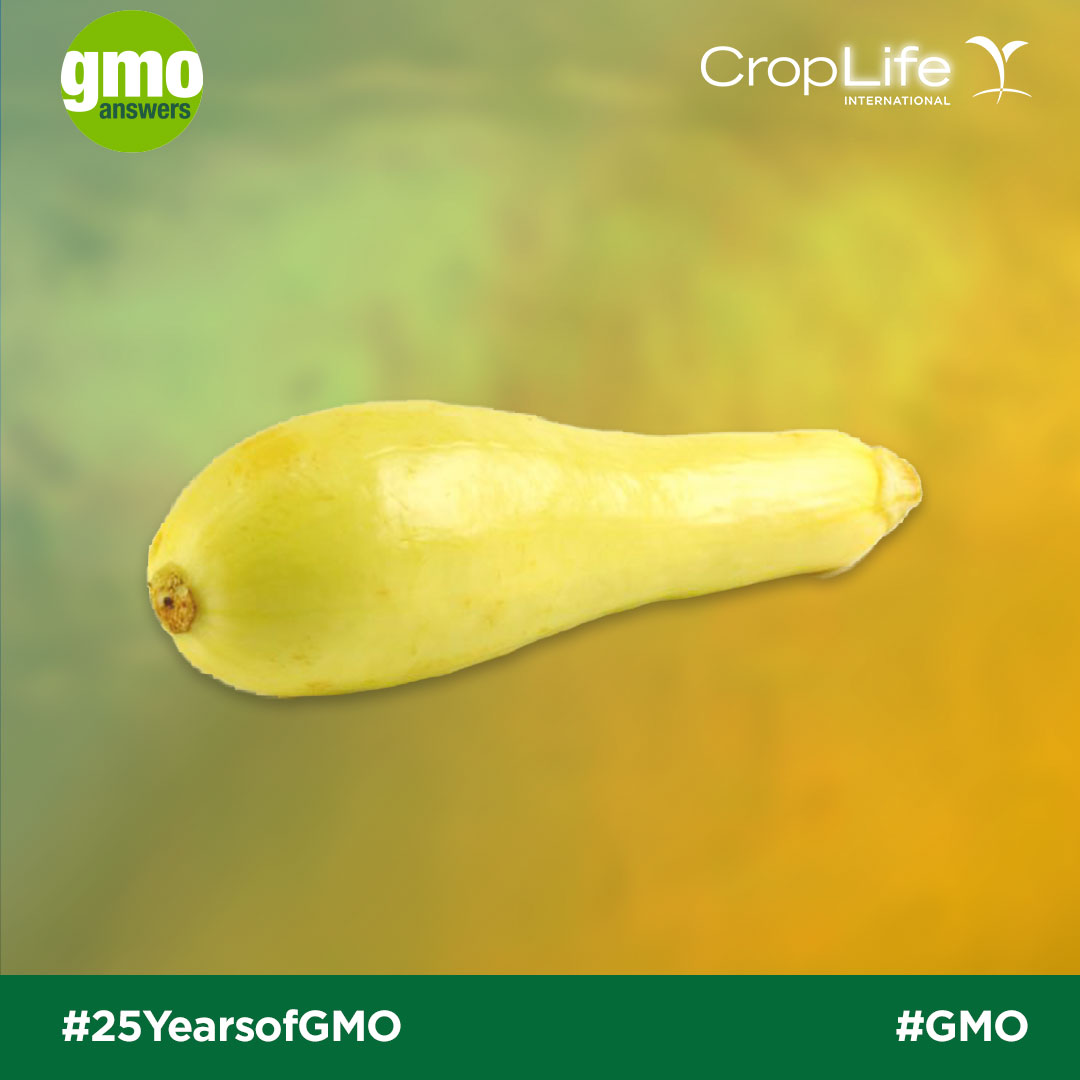
Genetically modified squash is almost exclusively grown in the United States, mostly in a small area in the Southeast United States. Very few farmers grow them, because they were developed for a specific area and to solve a specific problem. Unlike most early GMO crops, squash was genetically modified for the primary purpose of virus protection. Insects, like aphids, were spreading viruses across hundreds of acres and dozens of squash varieties, greatly reducing annual yields. Today, GMO squash is resistant to three separate types of common squash viruses: zucchini yellow mosaic virus, watermelon mottle virus, and cucumber mosaic virus.
Rainbow Papaya
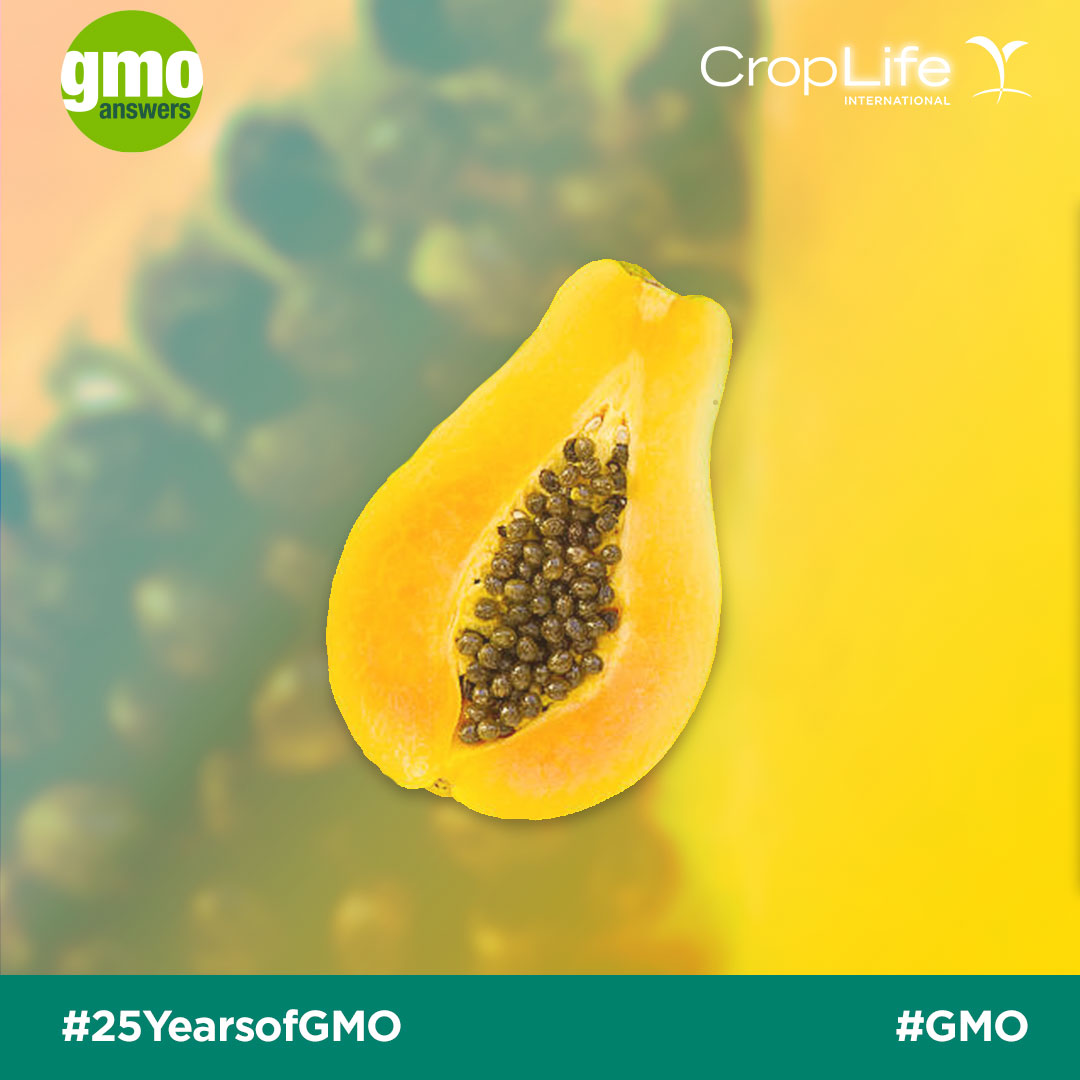
Without biotechnology allowing for the genetic modification of plants, the rainbow papaya would not exist today. From the 1950s to 1990s, a deadly and highly contagious virus called the papaya ringspot virus ravaged papaya plantations, killing up to 90% of the trees. If left alone, the virus would have wiped out the entire crop! Thanks to biotechnology, scientists were able to add a trait of resistance to the virus into the genetic makeup of the rainbow papaya and eventually stop the spread of ringspot. It has been so successful that GMO papaya now accounts for almost 90% of Hawaii’s papaya production.
Potato

GMO potatoes were developed to help the fight against food waste. Bruising, browning, and black spots are three issues that cause cosmetic imperfections in perfectly edible potatoes. The GMO potato was developed to resist these three issues, meaning fewer potatoes are thrown away. That means more on the plate and less in landfills. Some varieties are also able to resist common potato blight - part of the reason for the Great Irish Potato Famine. The GMO potato is one of the more recent GMOs to become available, coming to market in 2016.
Apple
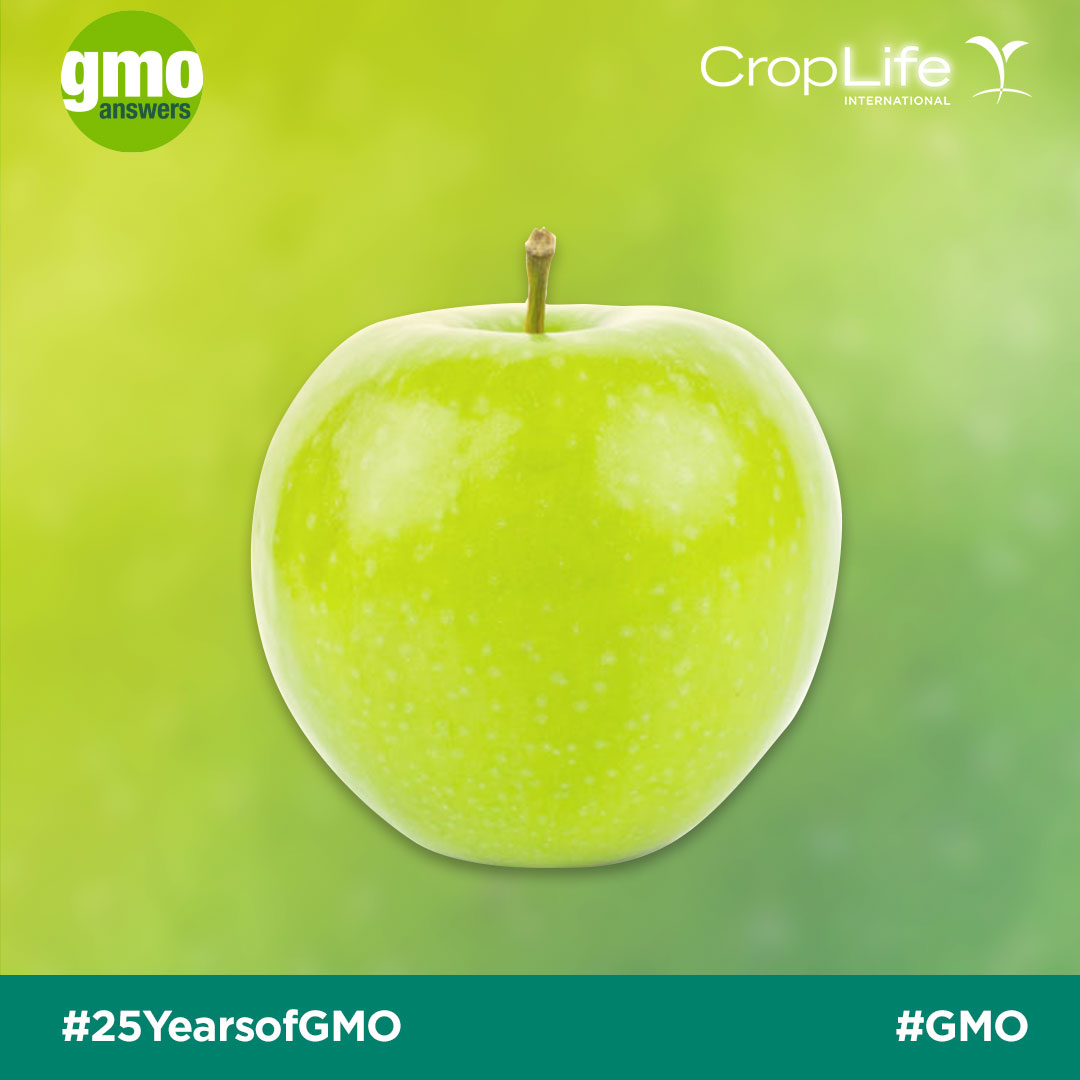
The GMO apple was developed to help fight food waste. As any parent knows, when you slice an apple into sections for easy eating, exposure to the air causes them to brown quickly. The GMO apple was modified to be non-browning. They still brown and go bad eventually, just as any apple does, but they don’t brown as quickly, meaning fewer apple slices tossed at the end of the day from kid’s school lunches. More apples eaten and less thrown away equals happy Moms or Dads packing lunch each day! It also means non-browning apple slices in apple pie, cobbler, and compote!
Brinjal (Eggplant)

Farmers growing brinjal, or eggplant, face problems with insect infestations, particularly the brinjal fruit and shoot borer. These insects can ruin entire harvests of brinjal, and so, in 2005, the GMO brinjal was first developed with the ability to fight off these pests. Today, GMO brinjal is a huge success story in the only country that has approved it so far, Bangladesh. Brinjal, as it is known there, is helping some of the world’s poorest farmers to feed their families and communities, improve profits, and dramatically reduce pesticide use.
Sugarcane

GMO sugarcane is currently being grown only in Brazil. Sugarcane makes up about 80% of the sugar production worldwide, but because GMO sugarcane is such a new GMO crop, it is still only a small part of the market share. GMO sugar cane was developed to fight pests like insects and worms. Much like GMO sugars beets, GMO sugarcane is as safe as sugar from conventional sugarcane varieties.
Pineapple
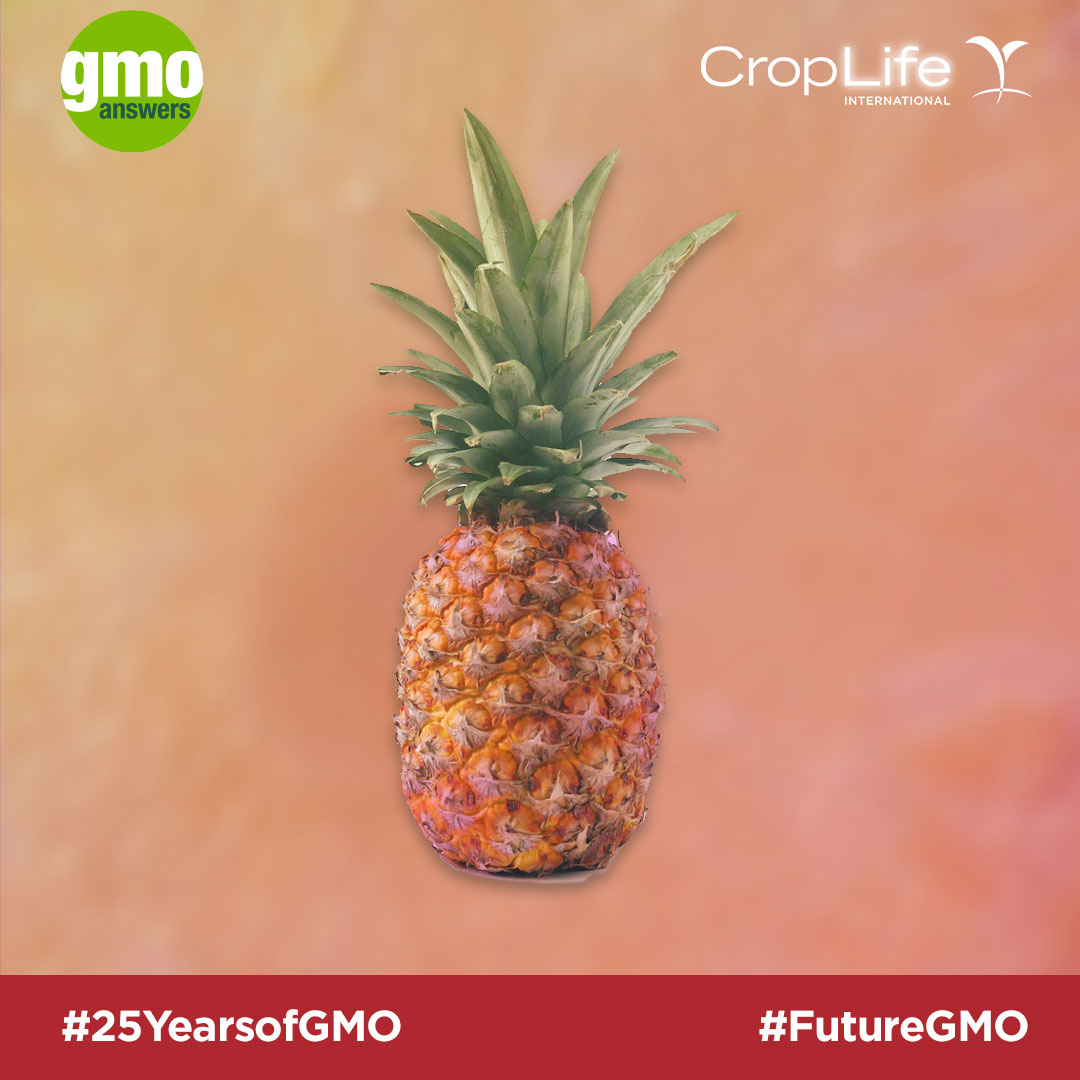
One of the most recently approved GMOs is the pink pineapple. Characterized by their distinctive pink flesh, the fruit is marketed as a sweeter version of its predecessor. The pink pineapple ends up pink because it accumulates the antioxidant lycopene, the pigment that makes tomatoes red, instead of converting it into yellow beta-carotene as other pineapples do. Since some research suggests that lycopene has a role in promoting heart health and reducing the risk of cancer, this makes it one of the few GMOs (along with heart-healthy soybean oil and canola oil) with health claims. The pink pineapple is currently grown in Costa Rica.
What You Should Know About Future GMO Crops
Golden Rice
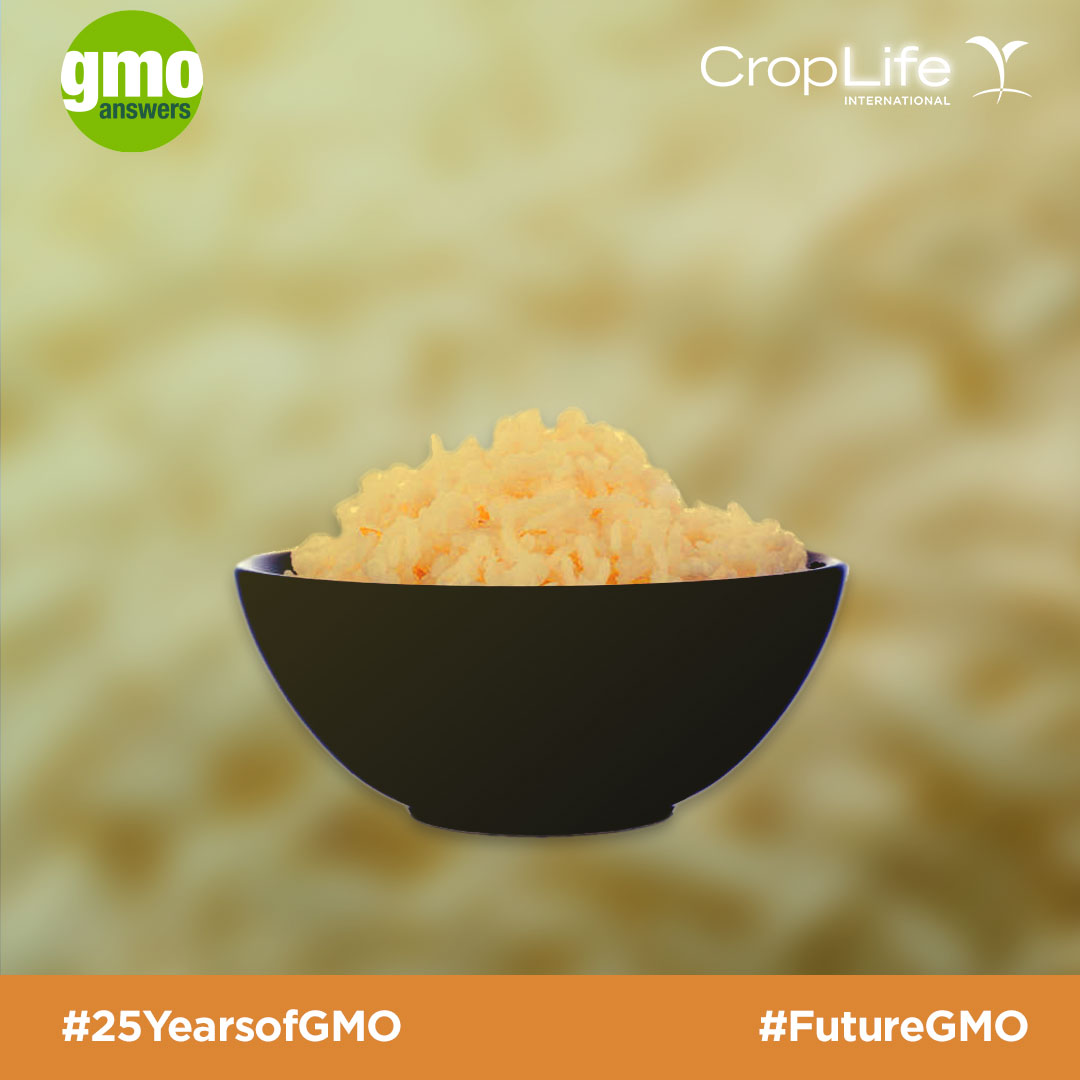
Rice remains a primary food source for more than half of the world's population. However, the crop does not provide many necessary micronutrients. The absence of these nutrients, specifically Vitamin A, can lead to debilitating health problems. Researchers have been working on developing enriched Golden Rice for 20 years. Golden Rice is rice genetically modified to contain Vitamin A in the form of beta carotene, a natural chemical found in carrots and corn. With Golden Rice, thousands of cases of nutrient-deficient blindness could be prevented. While approved in several countries, it is still not reaching the low-income countries it was developed to help.
Cowpea
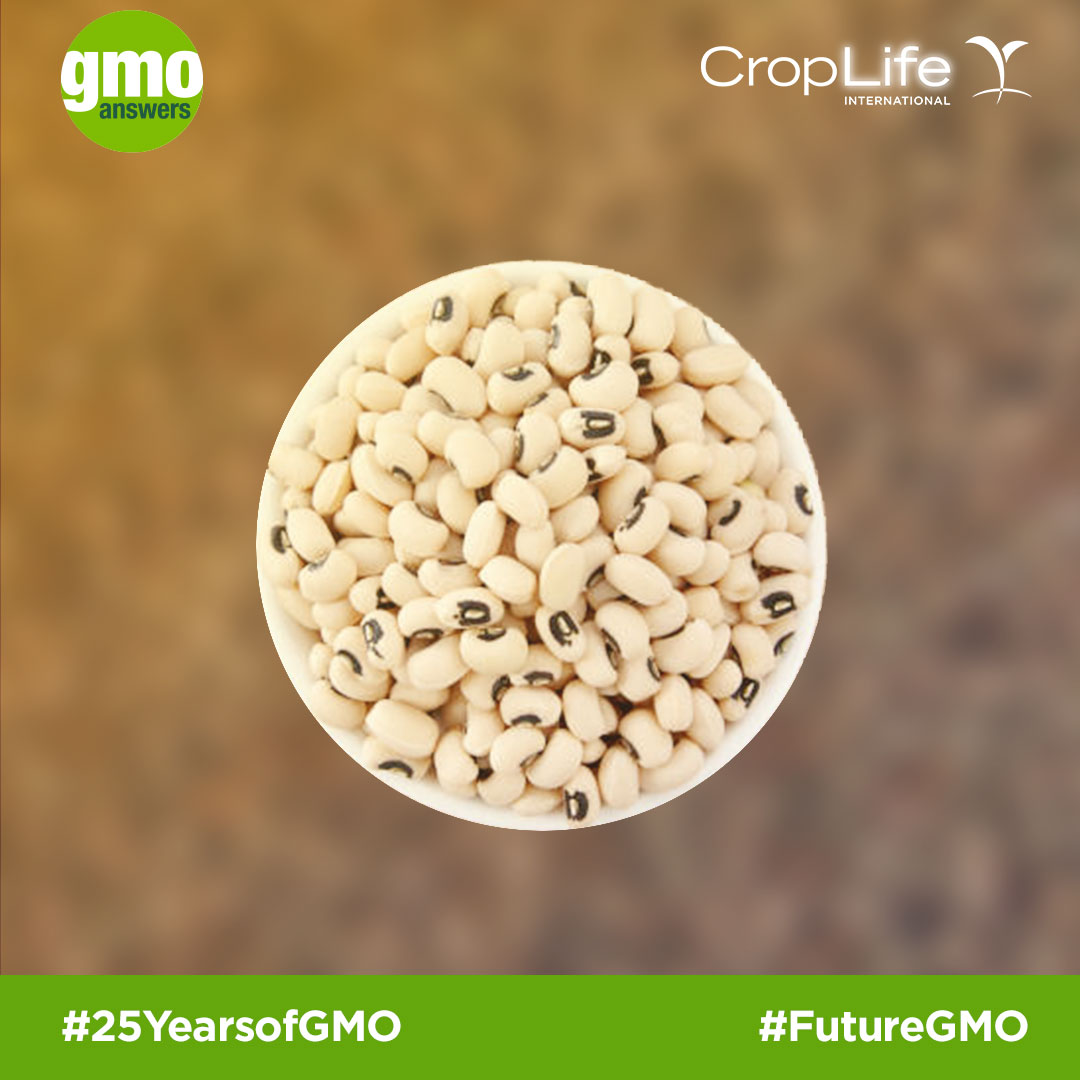
Cowpea, a type of legume similar to a black-eyed pea, is an important staple food and source of protein for millions of people in Nigeria and West Africa. But, cowpea farmers can lose up to 90 percent of their crop to the pod borer. A GMO cowpea has been developed that is resistant to the pod borer, allowing farmers to use less pesticides to control insects and weeds. The GMO cowpea also means increased yields and income for small farmers, since their crops are not being lost to pests. Recently, Nigeria was the first country to plant GMO cowpea, while other West African countries are researching and looking to plant it soon.
Cassava
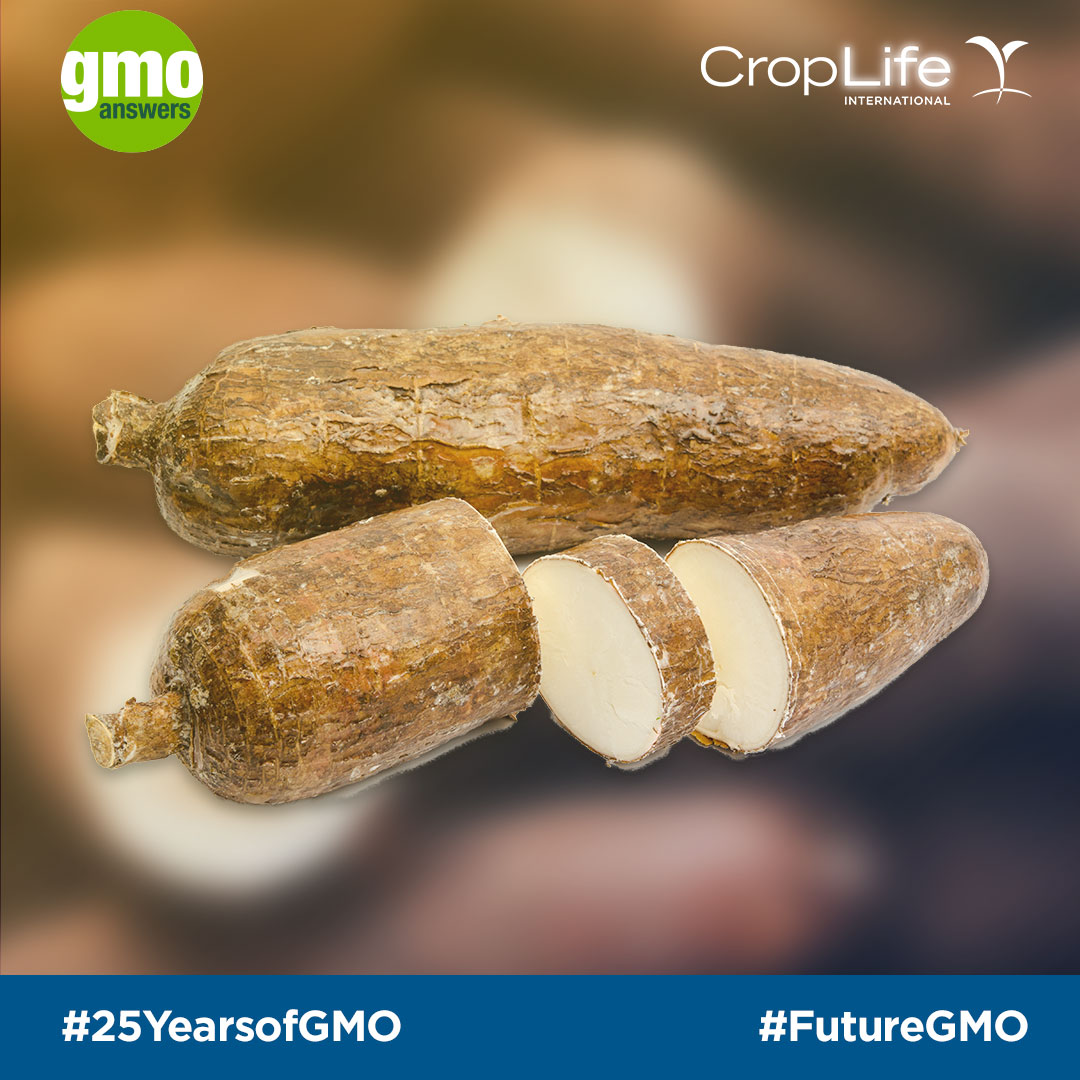
Over 800 million people depend on cassava as a main food staple. Also known as manioc and yuca, this root vegetable makes up around 50 percent of the caloric intake of around one-third of people in sub-Saharan Africa. The farmers growing cassava face a variety of issues, including disease and pests. Researchers are working on developing a variety of genetically modified cassava, ranging from being resistant to disease and pests to being tolerant of drought conditions. Much like Golden Rice, GMO cassava also has the potential for biofortification, which would bring much-needed nutrients to the consumers of the crop and help combat micronutrient malnutrition afflicting over 800 million people in developing countries in Africa and Asia.
Banana
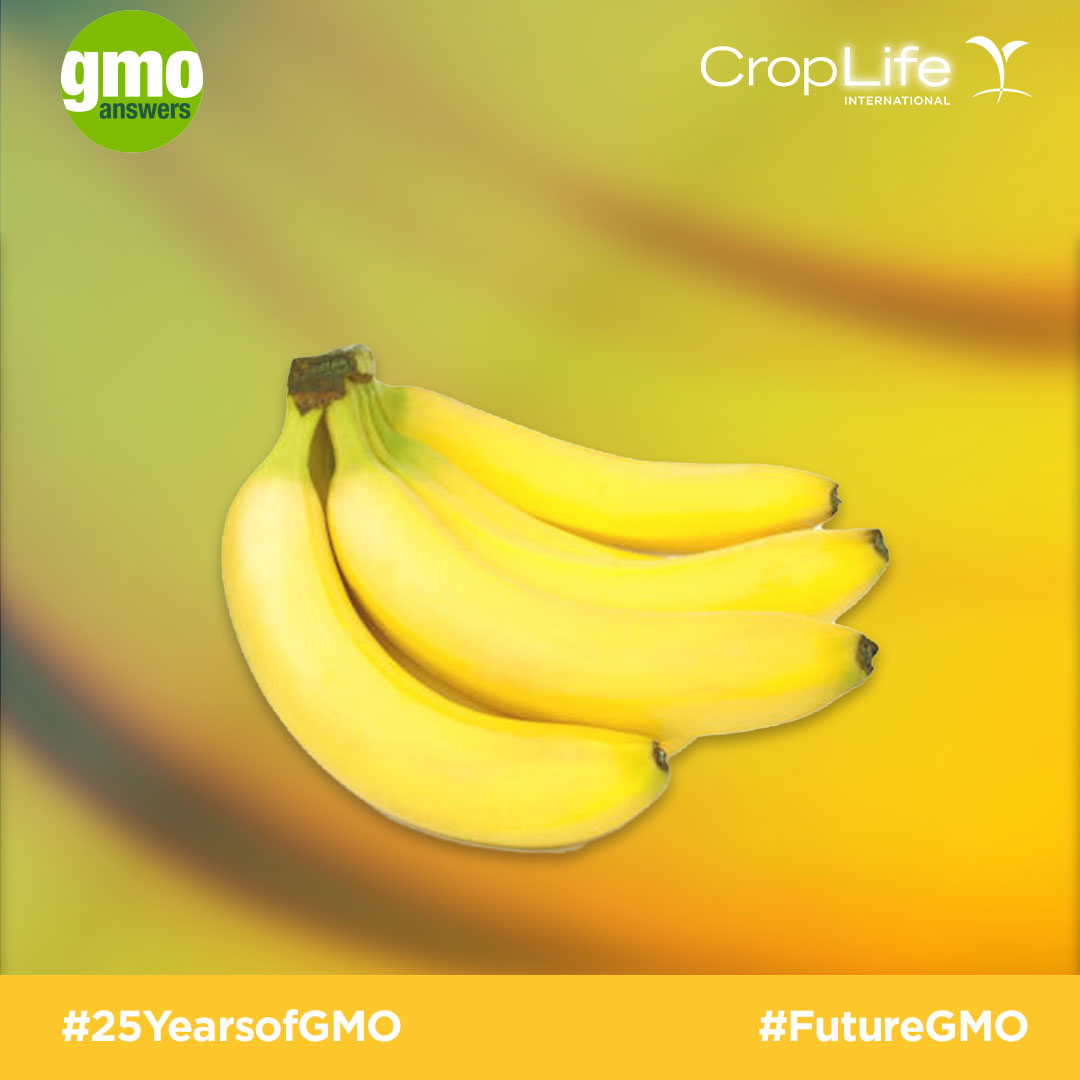
The banana is an important fruit crop around the world and one of the most important staple food crops in East Africa, particularly for Uganda, Tanzania, Burundi, and Rwanda. It feeds more than 100 million Africans and is mainly grown by smallholder subsistence farmers. The production of bananas is affected by several diseases and pests. Banana Xanthomonas wilt (BXW) is a bacterial disease threatening the production of bananas and the livelihoods of millions of growers in East Africa. Researchers in East Africa are developing a GMO banana that will be resistant to BXW. If successful, it will change the lives of thousands of farmers and consumers around the continent.
Sorghum
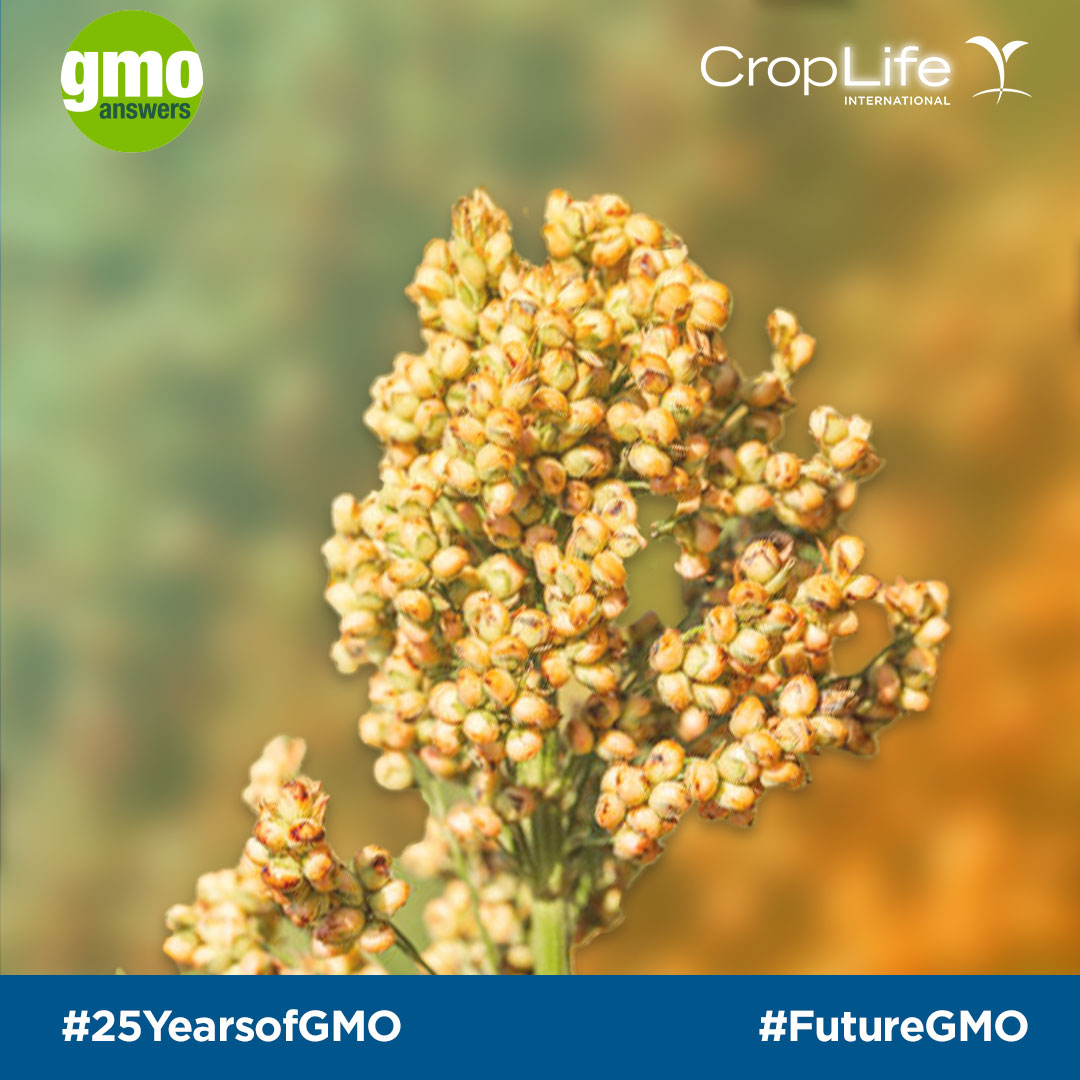
More than 300 million sub-Saharan Africans depend on sorghum as their primary calorie source. The ancient grain has natural heat and drought resistant properties that make it appealing to countries with limited access to water and irrigation. Unfortunately, the grain has low levels of Vitamin A, and up to half a million children go blind every year due to a lack of it in their diets. Kenyan scientists have responded to this problem by working on biofortified sorghum - a GMO version designed to contain higher levels of Vitamin A. Thanks to GMO sorghum, childhood blindness can be prevented while still keeping sorghum inexpensive and accessible.
Peanut
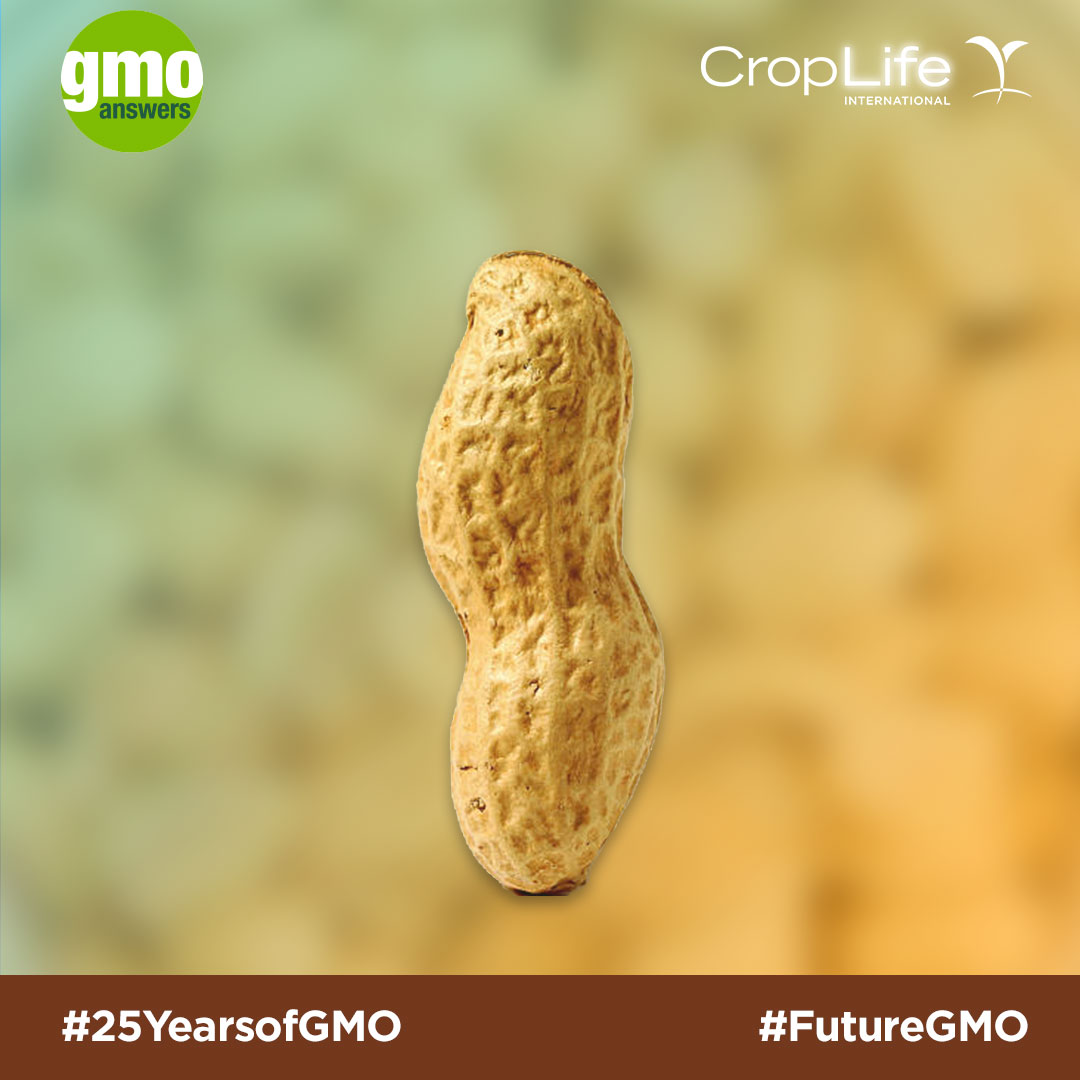
Childhood food allergies are growing worldwide, but especially in developed countries. Some of the most common foods for children to be allergic to are milk, eggs, peanuts, tree nuts (walnuts, almonds, pine nuts, brazil nuts, pecans), sesame, and shellfish. Of these, peanut allergies can have some of the most severe reactions, including anaphylactic shock and death. Given how common peanuts are in Western diets, food scientists have been looking into developing an allergy-free peanut. Progress is being made on an allergy-free, GMO peanut that silences proteins that can cause the specific food allergy. While still a long way from reaching consumers, the GMO peanut could be a game-changer for those with peanut allergies and their families.
American Chestnut
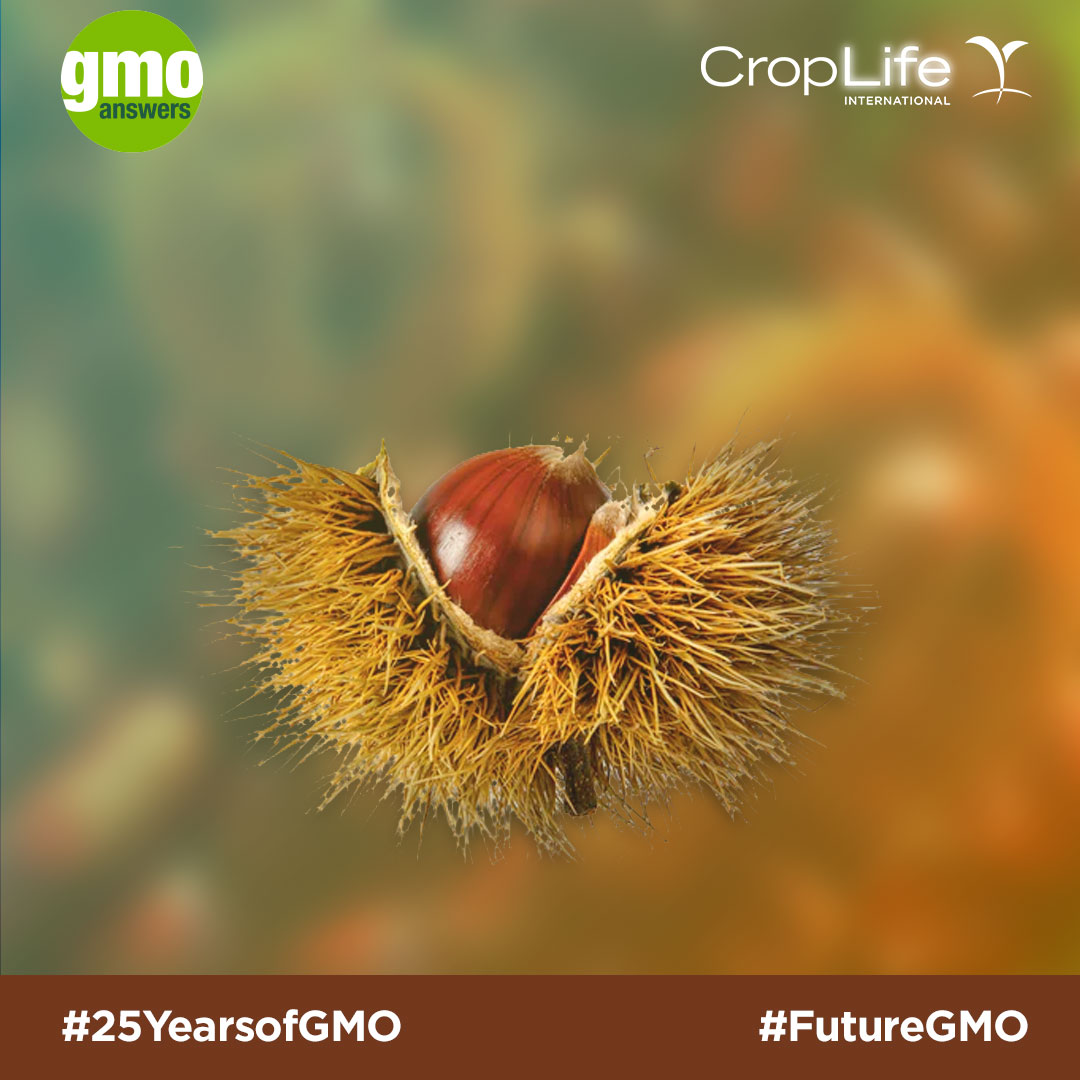
American chestnut trees nearly single-handedly built industrial America, but about 100 years ago, a deadly blight-causing fungus swept through the forests of the East Coast and killed more than 3 billion chestnut trees. The nation's chestnut tree population never fully recovered. Researchers have developed GMO chestnut trees with resistance to the blight that nearly caused them to go extinct. GMO chestnut trees may even be the first GMO tree to be planted in the wild. The GMO American chestnut tree is still in the research phase and is awaiting approval for being widely planted. The revival of these trees could bring the revival of the ecosystems that they harbor, the nuts they grow, and the lumber they provide.
What You Should Know About Common Misconceptions of GMO Crops
Wheat
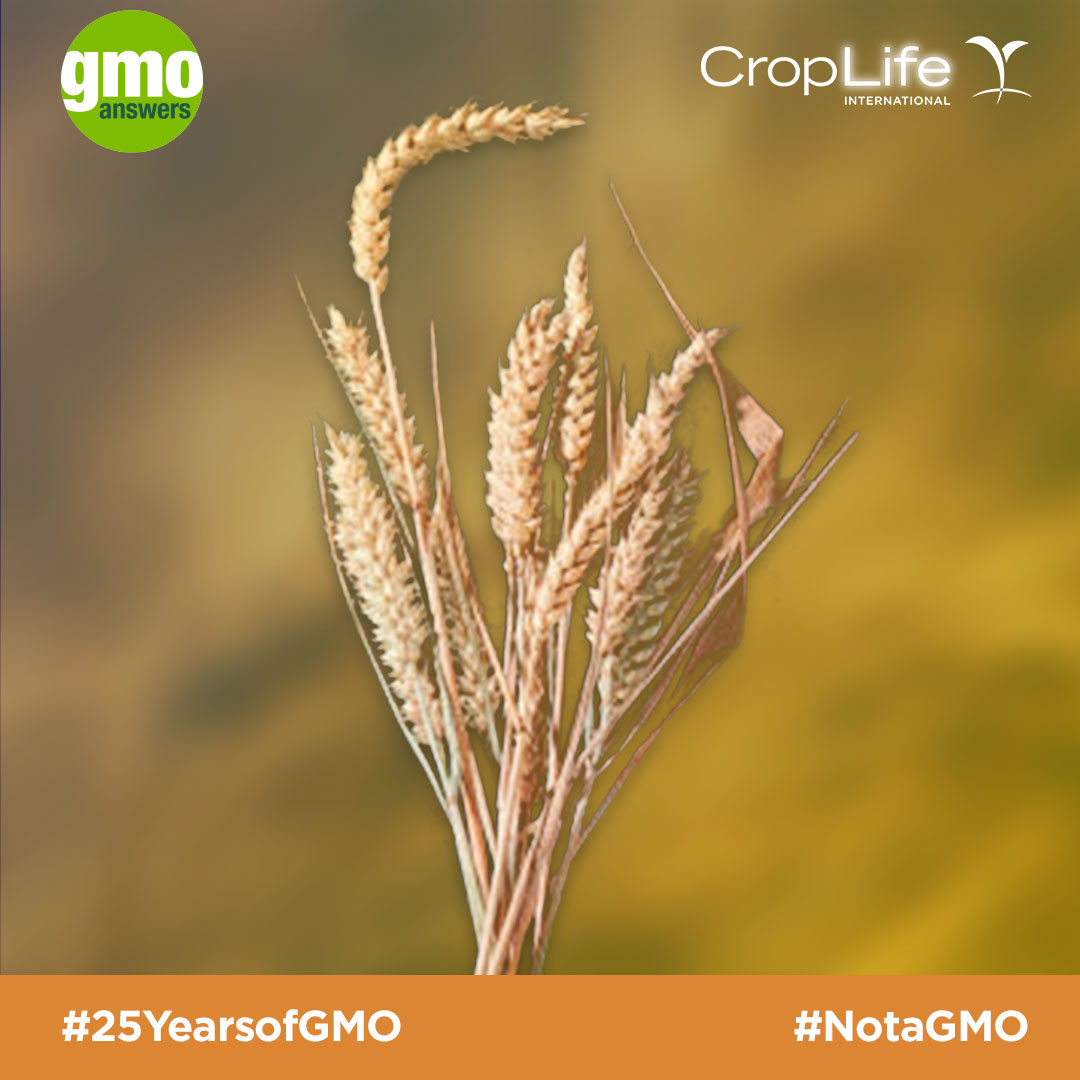
One of the most common misconceptions about GMOs is that there is GMO wheat. People frequently claim on social media to have a gluten allergy because of GMO wheat. However, there is actually no commercially grown GMO wheat. Wheat has been intensively conventionally grown and bred over hundreds of years to be the wheat we know and grow today. These conventional breeding methods produce many traits that could be genetically engineered, but at a much slower pace. However, since wheat is grown in such abundance every year, the process of conventional breeding is much faster.
Tomato
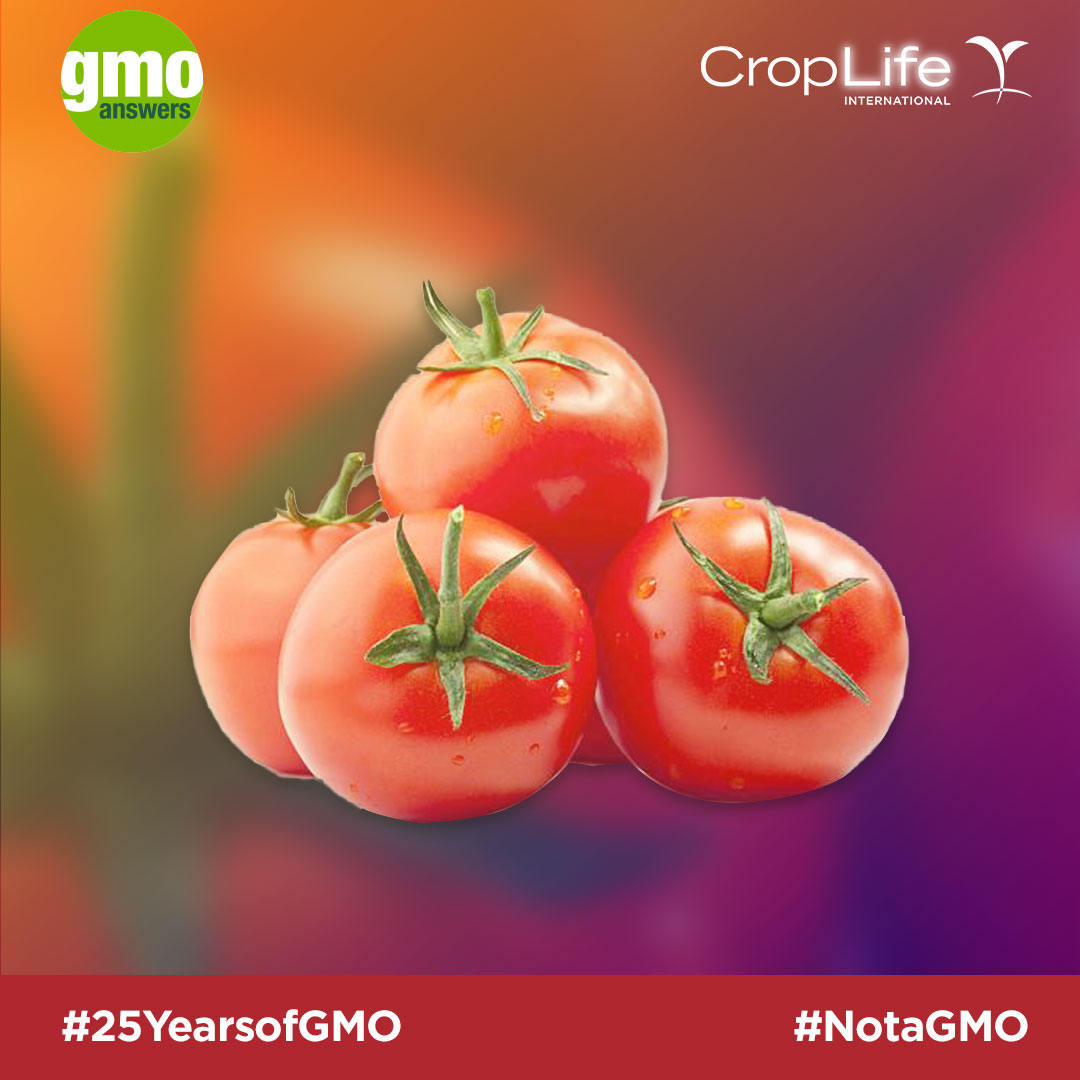
The GMO tomato is another misconception. There hasn't been a GMO tomato available for more than 20 years, since the “Flavr Savr” tomato was taken off shelves in the mid-90s due to poor sales. To put it simply, there isn't an immediate and necessary benefit that could be gained from developing and growing a GMO variety over the already existing conventional tomatoes. So, you don’t need to worry about shopping for non-GMO tomatoes because they don't exist yet.
Strawberry

When you see a really big strawberry, do you think it is a GMO? Nope, there are no genetically engineered strawberries commercially available anywhere in the world. Unfortunately, this is a common misconception as strawberries producers and sellers often add “non-GMO” labels to their packaging, implying that there is a GMO alternative. This kind of labeling is confusing to consumers, as they are misleading about the GMO crops that are on the market.
Seedless Grapes
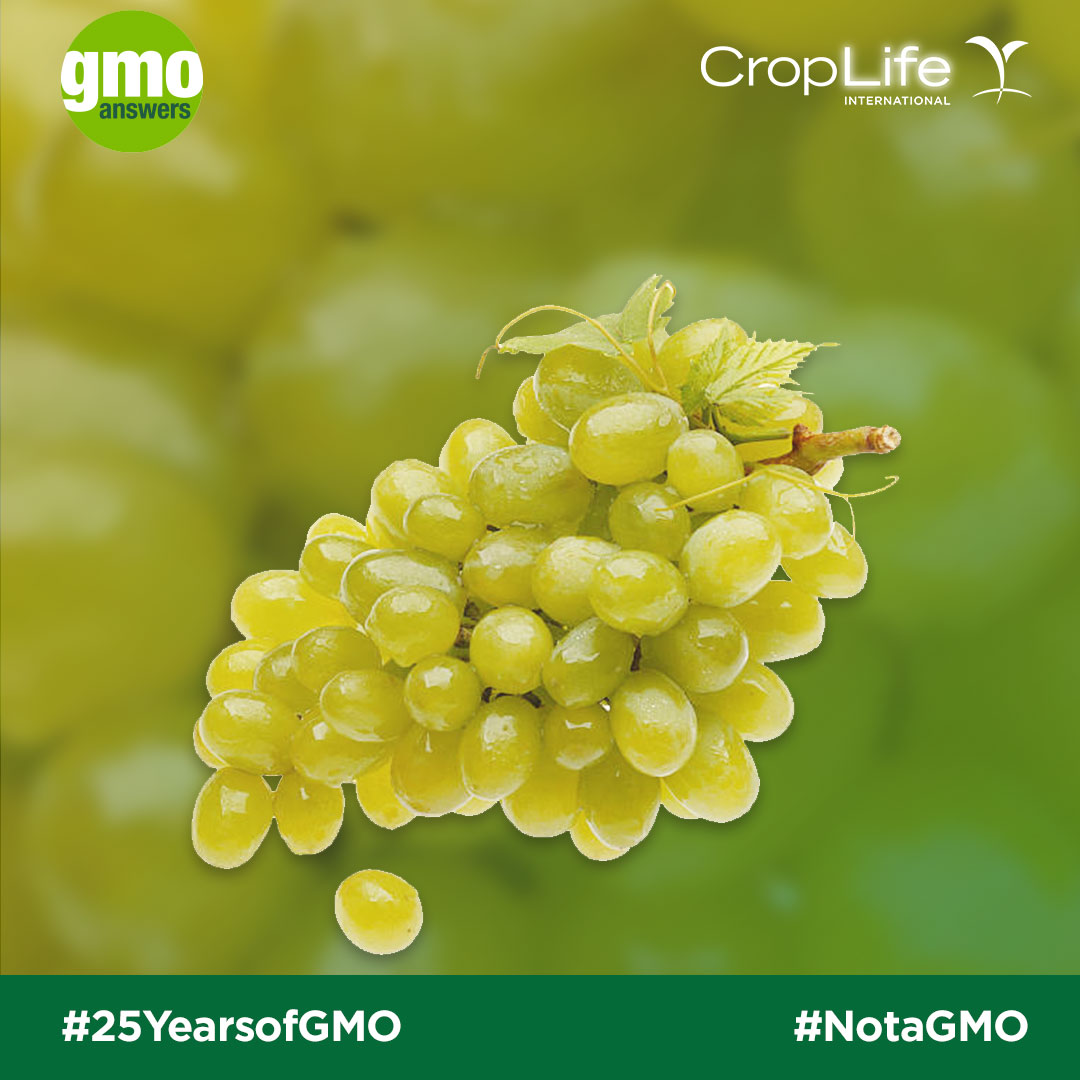
One popular misconception is how the “seedless” nature of seedless grapes came to be. Contrary to popular belief, the seedless trait is simply a product of conventional breeding. In fact, seedless grapes are essentially just clones of a very old variety of grapes that have existed for thousands of years. It’s only recently that consumers now prefer, and expect, the seedless grape on our kitchen tables. There are no GMO grapes on the market, much less GMO seedless grapes.
Seedless Watermelon
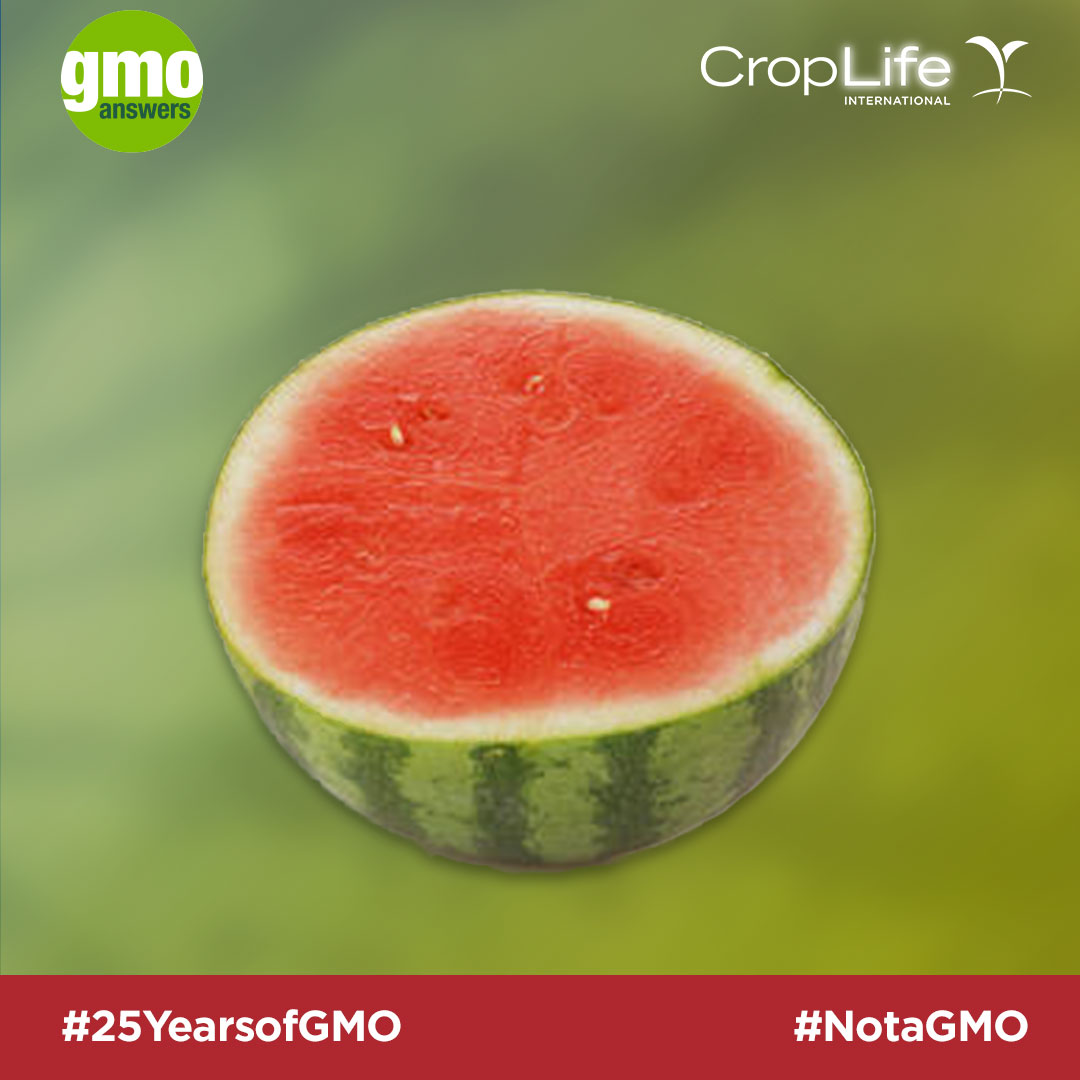
Similar to grapes, seedless watermelons are not a GMO. Seedless watermelons are not the result of genetic engineering or modification, but rather just centuries of breeding watermelons with smaller and smaller seeds until we got the watermelon we eat today. To get technical, seedless watermelons are cross-bred polyploids, meaning they have multiple sets of chromosomes. Other common polyploids include blackberries, sweet potatoes, and strawberries. There are seeds still in watermelon, but they are so small that consumers consider them, for the most part, seedless.


